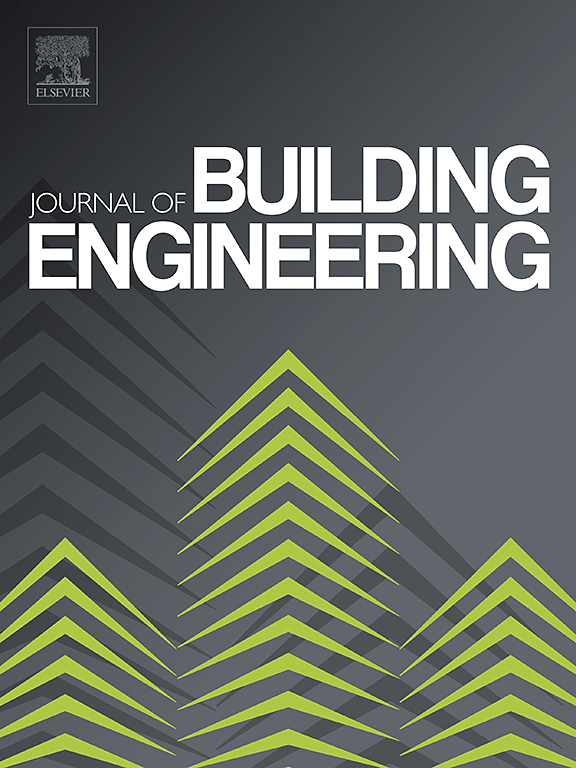Theoretical mechanism analysis and cyclic test of a improved hybrid beam through frame system
IF 6.7
2区 工程技术
Q1 CONSTRUCTION & BUILDING TECHNOLOGY
引用次数: 0
Abstract
An improved steel hybrid frame system, which integrates the peripheral moment frame design with the beam-through layered-column design in the interior of low-rise to mid-rise steel residential buildings, was proposed in the study. The load transfer mechanisms and deformation compatibility relationships were analyzed using structural mechanics methods. A theoretical preliminary design method was developed, and its effectiveness was validated through Pushover analysis conducted in MIDAS. A representative hybrid frame specimen was designed based on this theoretical framework. Quasi-static cyclic loading tests were performed to assess the practical hysteretic seismic performance. Results demonstrated that the hybrid frame exhibited multiple load-resisting mechanisms while maintaining clear lateral drift compatibility relationships. The damage sequences and load distributions of the indeterminate peripheral frame and interior braces can be analyzed and controlled using structural mechanics principles. Increasing the cross-sectional dimensions of the side columns and beams enhanced horizontal resistance. Certain brace location changes had a limited impact on lateral resistance. Following brace yielding, the peripheral frame accounted for the majority of energy dissipation, while post-yield strength hardening in the braces still contributed to the frame resistance increases under higher sway conditions. The hybrid frame delivered stable load resistance and excellent ductility, with the maximum drift ratio reaching 6%.
求助全文
约1分钟内获得全文
求助全文
来源期刊

Journal of building engineering
Engineering-Civil and Structural Engineering
CiteScore
10.00
自引率
12.50%
发文量
1901
审稿时长
35 days
期刊介绍:
The Journal of Building Engineering is an interdisciplinary journal that covers all aspects of science and technology concerned with the whole life cycle of the built environment; from the design phase through to construction, operation, performance, maintenance and its deterioration.
 求助内容:
求助内容: 应助结果提醒方式:
应助结果提醒方式:


